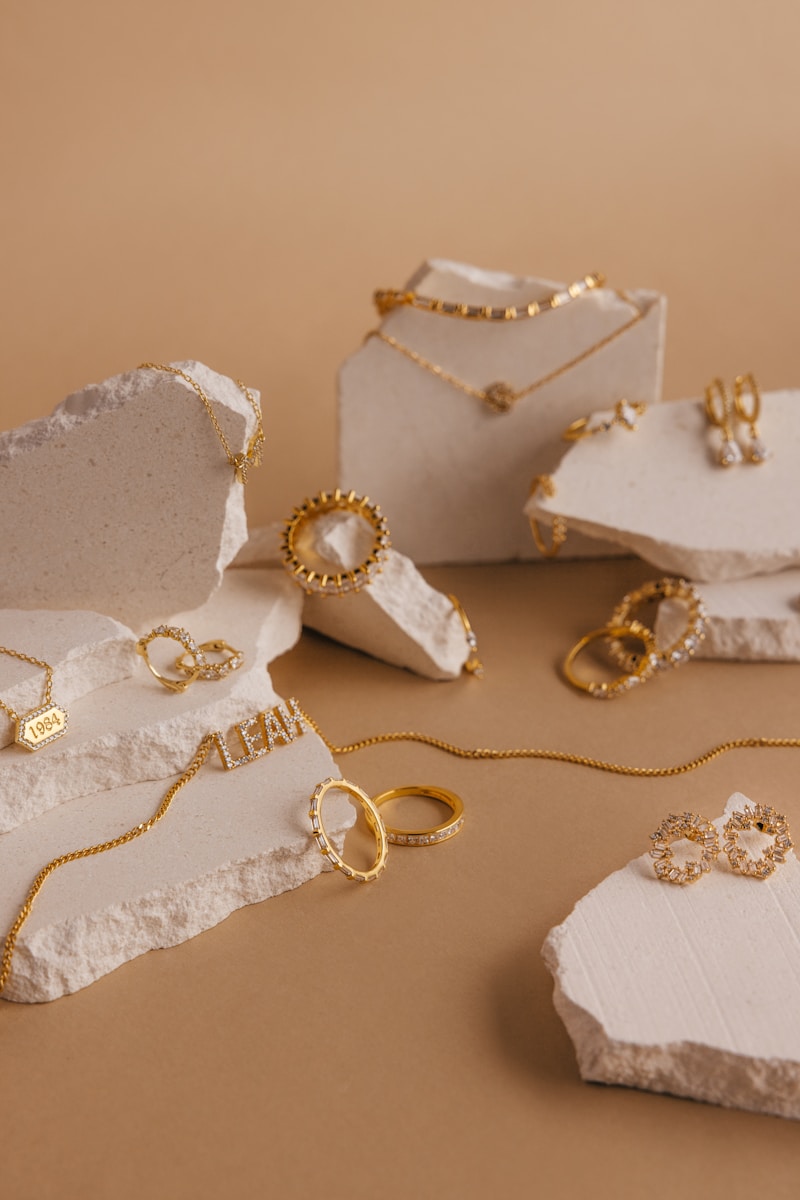For centuries, jewelry has held symbolic, aesthetic, and even spiritual significance — a quiet language of wealth, culture, and personal expression. From ancient talismans to diamond engagement rings, adornments have always conveyed messages beyond mere decoration. But today, a new conversation is taking place: one shaped not by tradition, but by form, abstraction, and material experimentation. Welcome to the world of sculptural jewelry, where art meets fashion — and where statement pieces once reserved for galleries or runways are now woven into everyday life.
In a time when personal style is increasingly about individuality rather than conformity, sculptural jewelry offers something traditional accessories rarely do: wearable art that challenges the eye, sparks conversation, and redefines what it means to adorn oneself. What was once niche or avant-garde has moved into the mainstream, becoming a compelling part of modern wardrobes — not in spite of its boldness, but because of it.
Beyond the Bezel: Redefining What Jewelry Can Be
To understand the rise of sculptural jewelry, it helps to first define what it isn’t. It isn’t about dainty chains, symmetrical pendants, or conventional settings. Instead, it’s about experimentation — in shape, scale, and intention.
Sculptural jewelry draws from the vocabulary of modern and contemporary art: asymmetry, abstraction, fluidity, fragmentation. It takes inspiration from natural forms, architecture, and even surrealism. A pair of earrings might resemble molten metal or deconstructed coral. A ring might twist into a miniature spiral staircase. A necklace might drape like liquid fabric, despite being forged from brass.
This genre resists traditional ideas of “pretty” or “polished.” Instead, it invites emotion, intrigue, and sometimes discomfort. The pieces are meant to be felt, not just seen — to change how we move, dress, and even think.
Designers like Annelise Michelson, Charlotte Chesnais, and Sophie Buhai are just a few of the visionaries reshaping the jewelry landscape, creating objects that are not mere accessories but extensions of the self — tactile, architectural, poetic.
Sculpture for the Skin: The Appeal of Form and Material
What makes sculptural jewelry so resonant in today’s fashion climate is its physicality. These pieces are unapologetically present. They sit on the collarbone like armor, wrap the finger like vines, or protrude from the ear like polished rock formations. They command space, and in doing so, challenge the minimalist ideals that dominated accessory trends in the early 2010s.
Yet, they are not purely decorative. There is a mindfulness in their form. Many sculptural pieces are made from sustainable or raw materials — recycled metals, uncut stones, or experimental composites. Others explore scale in unexpected ways: oversized hoops with organic warping, chokers that mimic kinetic sculptures, cuffs that resemble bone structures.
These choices reflect a deeper shift in consumer consciousness. We are no longer buying jewelry only for its sparkle or its preciousness. We want meaning, texture, story — a sense that what we wear reflects not just our style, but our values and curiosity.
The Influence of Art and Architecture
The rise of sculptural jewelry is closely tied to the ongoing dialogue between fashion and art. In recent years, fashion has grown more interdisciplinary, with designers referencing everything from brutalist architecture to abstract expressionism.
Artists like Barbara Hepworth, Isamu Noguchi, and Jean Arp — known for their organic yet minimalist sculptures — have inspired a generation of jewelers to think beyond tradition. Their works emphasized negative space, movement, and emotion — all qualities that translate beautifully into wearable forms.
For example, a gold-plated cuff might reflect the curves of a Hepworth carving. A pair of earrings could mirror the fluid lines of a Noguchi table. These pieces don’t just complement an outfit — they transform it into a canvas.
This relationship between sculpture and style is nothing new. Even ancient civilizations produced highly stylized jewelry with symbolic forms. But today’s version feels distinctly modern — informed by art history, yes, but also driven by digital design, 3D printing, and experimental handcraft.
Sculptural Jewelry as Personal Architecture
One of the most interesting aspects of sculptural jewelry is its interaction with the human body. Unlike flat or symmetrical pieces, sculptural jewelry responds to movement. A curved earring might catch the light differently as you turn your head. A rigid collar necklace may change posture or silhouette. These pieces don’t just sit on the body — they engage with it.
As such, they become forms of personal architecture — bridges between self and space. They demand awareness. The wearer becomes part of the artwork, influencing how it’s perceived in motion and time.
This makes sculptural jewelry particularly appealing in an era when we are rethinking physical presence. As remote work, screens, and digital avatars dominate our interactions, the desire for tangible, real-world expression has grown. Sculptural pieces reconnect us to the physical — to sensation, weight, shadow, and scale.
Everyday Art: Dressing Boldly in a Wearable Gallery
While the phrase “sculptural jewelry” might conjure visions of runway models or art fairs, one of the most striking trends is how these pieces are being integrated into everyday wardrobes. No longer reserved for special occasions, sculptural accessories are being worn with casual knits, white T-shirts, denim, and tailored workwear.
This democratization reflects a broader cultural shift — one where art is no longer locked behind glass but is part of how we live and present ourselves. A single, bold earring can elevate an otherwise simple outfit. A uniquely shaped brooch can transform a blazer. Even in professional or minimalist environments, sculptural jewelry offers a subtle form of rebellion — proof that creativity doesn’t require color or chaos.
This is especially empowering in a fashion landscape often defined by fleeting trends. Sculptural jewelry offers longevity. These pieces are rarely seasonal. They’re often made to last, to be collected, passed down, or reinterpreted over time. They invite slow fashion, not fast consumption.
Sculptural Jewelry and Identity: Adornment as Assertion
At its core, the rise of sculptural jewelry reflects our evolving relationship with identity and self-expression. In a world where personal style is often curated on digital platforms, jewelry offers something more intimate — a choice you make for yourself, close to your skin, often unnoticed by others.
Sculptural pieces take that intimacy and magnify it into visibility. They allow wearers to express boldness without noise, individuality without flamboyance. They attract curiosity — not for what brand they are, but for what they mean. Are they art? Armor? Heirloom? Statement?
For many, the answer is all of the above.
In this way, sculptural jewelry becomes a kind of quiet power — a way to occupy space, to disrupt expectations, and to articulate values through design. It’s less about accessorizing and more about storytelling.



